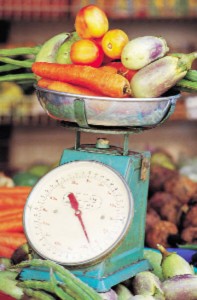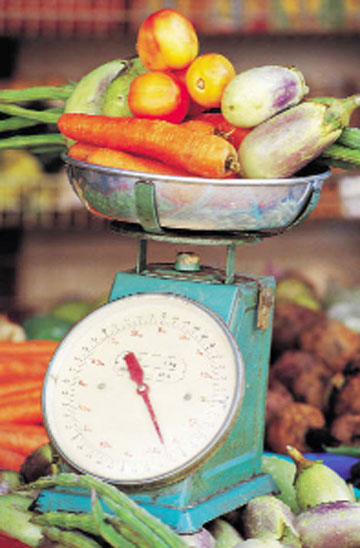It’s metric time again. And it will continue to be metric time until consumers accept that Guyana went metric on January 1, 2002. We still go to vendors and purchase our fruit and vegetables in pounds when we could easily make our purchases in kilograms. One kilogram is a little more than 2 lbs.
There is very little for us to remember. The word mass replaces weight. For volume we ask for litres or milliliters. Length is expressed in metres. We no longer ask for inches, feet and yards. One metre (m) is equivalent to 3 feet 3 in. For long distances we use kilometres. (Please note that this is pronounced kilo-metres and not kilom-eters, which is the American pronunciation).
 The Metrication Committee under the Guyana National Bureau of Standards has been working assiduously for years trying to establish metric as the current unit of measurement. It is now pleased to announce that Region 2 is fully metric. Why? Because the distributors of food items packaged their goods in plastic bags and gave the weight in metric. Consumers readily accepted the plastic bags. So why are consumers elsewhere un-willing to turn to metric?
The Metrication Committee under the Guyana National Bureau of Standards has been working assiduously for years trying to establish metric as the current unit of measurement. It is now pleased to announce that Region 2 is fully metric. Why? Because the distributors of food items packaged their goods in plastic bags and gave the weight in metric. Consumers readily accepted the plastic bags. So why are consumers elsewhere un-willing to turn to metric?
The Weights and Mea-sures Act was passed in Parliament many years ago but the metric system did not replace the imperial system until January 1, 2002. Metric will not be fully implemented until an Omnibus Act is passed in Parliament to amend all the references to measurement in the Motor Vehicles and Road Traffic Act and in other laws.
It is amazing to know that our schools have fully adopted the metric system and yet students do not educate their parents and ensure that metric is fully implemented. Is it that we still keep our knowledge in tight compartments?
For mass we have to use grams and kilograms. One kilogram (kg) is a little more than 2 lbs. Vendors have metric scales and when we ask for pounds they try to convert and we the buyers lose. We should now ask for ½ kilogram or 500 grams when we need a pound of fruit or vegetables.
It is nonsense to buy solids like rice, peas, flour in pints. They are not liquids. How the habit began we cannot say. Give the correct measurement in grams and kilograms.
For volume we ask for litres (L) and milliliters (mL). This change has been more widely accepted as bottled drinks are sold in litres, but we still tend to buy our kerosene in gallons. Let us make a complete change.
For length the metric system uses metres. No longer should we use inches, feet and yards. For long distances the kilometer replaces the mile. The speed limits for vehicles now need to be in kilometers per hour. This poses a problem when there is an attempt to change miles into kilometers, as round numbers are not obtained. Speed limits will have to be revised. One metre (m) is equivalent to 3 ft. 3 in. and is therefore almost equal to a yard.
The area of Guyana is 214,970 sq km. The Kaieteur Falls is 226 metres (m) high.
Don’t let us show that we have grown old by refusing to accept the change to metric.






